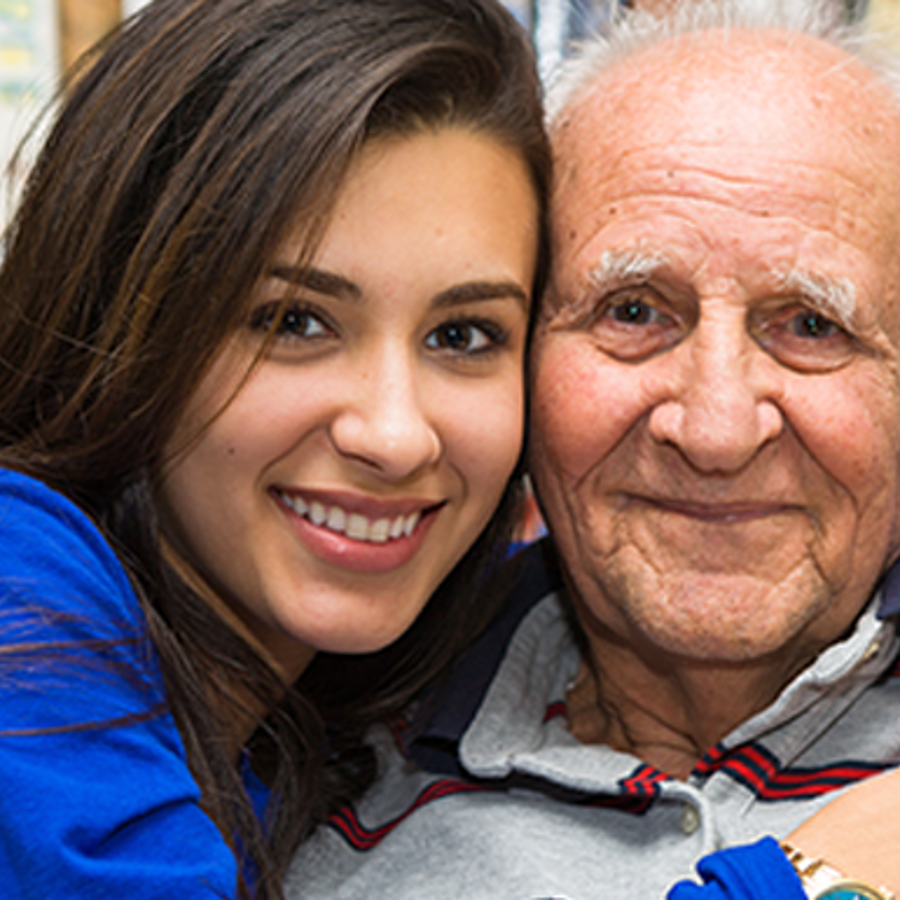
If an ancestry test says someone is my cousin, what other possible relationships could we have?
December 16, 2014

- Related Topics:
- Relatedness,
- Genetic genealogy,
- Consumer genetic testing,
- Ancestry tests,
- Mitochondria,
- Y chromosome
A curious adult from Oklahoma asks:
"My mother who recently passed away was adopted at birth and I have been searching for her biological family. I recently received my results from Ancestry DNA and was matched with a gentleman it says is likely my first cousin. He is 83 however and I’m 30 so it seems like the age might be a little off for that to be the relationship. I’m just curious if it’s possible for them to mistake him for a first cousin when there is a different relationship? Is it possible for him to instead be my mother’s sibling, my uncle? What other possible relationships could it be if any?"
At their simplest, these genetic tests look at how much DNA two people share. On average, first cousins share 12.5% of their DNA. An uncle would share more DNA with a niece or nephew, on average about 25%.
But first cousins aren’t the only ones that share around 12.5% of their DNA. A half uncle, great uncle, or a great grandparent would as well. And all of these make more sense given the age difference. (Click here for a great list of relations and shared DNA.)
To one of these tests, a great uncle pretty much looks like a first cousin. This is why you often need a bit more than just the DNA results… a little family history can go a long way towards figuring out exact relationships.
Unfortunately we don’t always have family history to go on. Then you need to dig a bit deeper and have a little luck to figure things out.

Tracking the Y chromosome
Looking a bit deeper at DNA results won’t always give you the right answer but it can sometimes help rule out some possibilities. For example, you might be able to rule out that he is either your grandpa’s or your grandma’s brother.
If he is your grandpa’s brother, then looking at Y chromosomes might help. However, only biological males have a Y chromosome. So if you’re female, it won’t be part of your test results. In that case, you’d need to find a close male relative to use for this comparison.
Y chromosomes pretty much get passed from father to son unchanged. This means that for a man to be the father of a certain boy, they must both have the same Y chromosome.
We can take this information and use it to rule in or out certain possibilities. Imagine this family tree:

Men are represented by squares and women with circles. Since we are only following the Y chromosome, that is the only DNA I am showing.
In this case if you and the tested man share a Y chromosome, then he may be a great uncle on your dad’s side of the family. If not, then he is not that great uncle.
But this sort of analysis isn’t as powerful as you might think. For example, all we can say if the two of you do not share that same Y is that he is not that great uncle. Here are a couple of examples where he is a great uncle, just not that particular one:

In the example on the left, the great uncle happens to be your grandma’s brother. His white Y is different from the red Y your grandpa passed down to you. You could not get the white Y from your grandma’s side of the family because she didn’t have one to give.
Something similar happens on the right. Here the great uncle is still your grandpa’s brother but it is on the maternal side of the family. In other words, he is your mother’s father’s brother. Since you are related through your mother, you do not get the white Y from her side of the family. Instead you get the red Y from your dad’s side.
Mitochondrial DNA
There’s another type of DNA that could help shed some light as well: the mitochondrial DNA (mtDNA). And in this case, it doesn’t matter if you are male or female. Everyone has mtDNA!
This type of DNA is passed from mother to children. What this means is that you have none of your dad’s side of the family in terms of mtDNA.
Here is an example where you could check to see if the tested man was your mom’s brother:

Here you share your mtDNA with your great uncle because you can follow your maternal line all the way back to him. The white mtDNA passes intact from his sister to your mom to you.
Again it is possible for you not to see a similar relationship even if he is your grandma’s brother. And for sure it will be missed if he is your grandpa’s brother. Here is what those would look like:

On the left, you are related to your great uncle on the paternal side. This means the two of you will not share mtDNA as you get your mom’s not your dad’s.
In the example on the right, your great uncle is your grandpa’s brother. Here even your parents do not share mtDNA with him.
As you can see, this extra digging into your DNA only works in special circumstances. Much of the time if you don’t have any family history information, you have to just accept that the two of you are related in some way.
This sounds like a bad outcome but it really doesn’t have to be. Even a few years ago there is no way you would have found this man with just a DNA test. You would never have known the two of you were related.
It is only recently that these tests have become precise and, yes, cheap enough to be able to see anything like a first cousin or great uncle. If nothing else it is a great jumping off point to talk about what the possible relationships might be.
Follow up: The person who asked this question found out that the related man is indeed a great uncle. This was through family history and not a lucky break with the Y chromosome or mtDNA.

Author: Dr. Barry Starr
Barry served as The Tech Geneticist from 2002-2018. He founded Ask-a-Geneticist, answered thousands of questions submitted by people from all around the world, and oversaw and edited all articles published during his tenure. AAG is part of the Stanford at The Tech program, which brings Stanford scientists to The Tech to answer questions for this site, as well as to run science activities with visitors at The Tech Interactive in downtown San Jose.
 Skip Navigation
Skip Navigation
